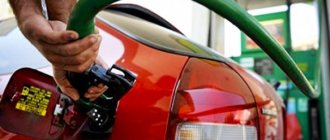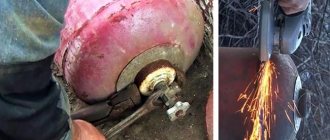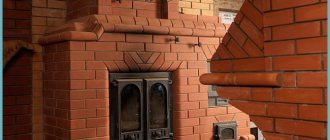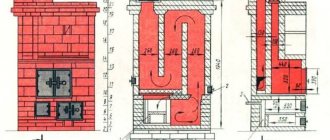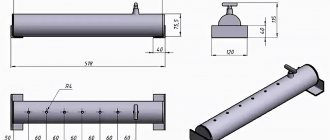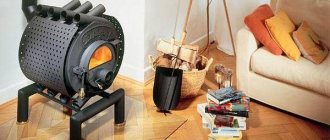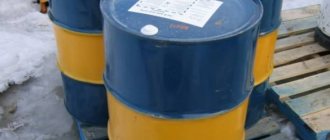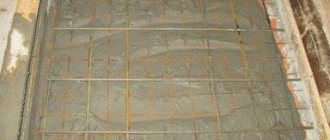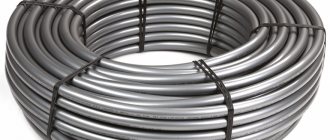The fireplace is the heart of the house. The crackling of wood in the fireplace, the warmth of the hearth and a unique atmosphere. As a rule, the fireplace occupies a central place in the house and carries with it not only aesthetics, but also functionality.
And so that your fireplace serves you for a long time and performs its main function - heating the room, we will consider all the most popular types of fuel for heating the stove and fireplace in a private home.
What is the best way to light a fireplace?
How to heat a fireplace in a house so that it is practical and aesthetically pleasing? The choice of fuel determines the height of the flame, burning time, heat transfer and, oddly enough, the amount of soot and type of firebox over time.
Therefore, we will consider the most common types of fuel for stoves and fireplaces in Belarus from all sides:
- firewood
- coal
- gas
- fuel briquettes
- wood pellets
- biofuel
Firewood and coal - good old classics that are best left in memories? Life is becoming more expensive and today it is important to think not only about aesthetics, but also about heat indicators and the duration of fuel burning in the fireplace. And firewood is far from the best fuel option for a stove and fireplace. Technologies do not stand still, and today zealous owners choose long-burning Eurowood for heating their stoves and fireplaces. Simply put, compressed wood fuel: briquettes and pellets (granules).
How to calculate how much solid fuel you need to have in stock?
Of course, any owner of a solid fuel heating unit would like to know how much firewood (briquettes, coal) he will need to survive the winter season without any problems. This can be calculated, approximate, of course, but on the scale of a “heating company” it is still quite reliable.
To simplify the task for the reader, we will not give formulas - we will simply invite him to use the capabilities of an online calculator, which already contains the necessary calculation algorithm. And below the calculator the necessary explanations for performing the calculation will be given.
Calculator for calculating the average consumption of solid fuel for heating
Go to calculations
Explanations for performing calculations
- The starting value for the calculations is the thermal power formula that needs to be spent to fully heat the house. An important nuance is that this is not the maximum thermal power of the stove or boiler specified in the passport, since it is usually overestimated - the model is purchased with a very significant operating reserve.
But we are interested precisely in the amount of thermal energy that is required by the specifics of the heated premises and the entire house as a whole. We will not repeat how to determine it, since this is described in great detail in a special publication on our portal.
You may be interested in information about what a buffer tank for a solid fuel boiler is
How to determine the heat requirement for the premises of a house or apartment?
The reader is presented with an algorithm that takes into account not only the area of the premises, but also a host of other specific factors that, to a greater or lesser extent, influence the heating power. can do this step-by-step heating calculation using a special article that describes and justifies each action in detail.
- Any solid fuel heating unit loses some of the heat generated. These losses are characterized by the efficiency factor, which must be indicated in the device passport.
- Next, you should choose the direction of calculation - whether it is carried out for firewood or for other types of solid fuel. Depending on the selected path, additional data entry fields open.
— If firewood is selected, then the type of wood is selected from the drop-down list, and then the degree of drying of the firewood is indicated.
— If you select other types of fuel, a list box will open - select the desired option.
- After clicking on the calculation button, the desired result will appear. For convenience, it is shown for daily, weekly and monthly consumption.
A small nuance: if you chose the calculation for firewood, then the units of measurement for the shown value are cubic meters. For all other types of solid fuel, the result is in tons. The calculator provides appropriate tips.
It should be correctly understood that the accuracy of such calculations still suffers quite a lot. The reason is simple - the calculation is carried out for the most unfavorable conditions. Meanwhile, severe cold usually does not last so long; most of the winter the frosts are moderate, and are often replaced by thaws. That is, in any case, the consumption should be somewhat lower.
It's okay - stock is always useful, anything can happen. Well, after a couple of years of operation, the owners will no longer need any calculations at all - they will know perfectly well what kind and how much fuel they need to prepare for the season.
* * * * * * *
Let’s finish the article with an interesting video that compares the advantages and disadvantages of firewood and fuel briquettes. Read about tall bimetallic radiators on the website.
Is it effective to heat a fireplace with wood briquettes?
Wood briquettes are the most convenient and effective way to fire a fireplace and stove in the house today. This type of fuel is often called Eurowood, and lighting a fireplace with ordinary wood is gradually becoming a thing of the past. This is how a new type of firebox appears with the already familiar name - Euro-firewood.
Eurofirewood is pressed firewood in the form of briquettes. This type of fuel has many advantages compared to conventional wooden firewood:
- During the combustion process, wood briquettes provide heat transfer 30-50% more than conventional firewood.
- Eurofirewood consists of pressed wood or peat of a certain moisture content. It is the humidity indicator that determines the quality of firewood combustion - in briquettes the humidity does not exceed 11%, which means the flame is more uniform and does not spark.
- One full load of wood briquettes will burn for about 2 hours. Peat briquettes up to 4 hours.
Pellets
Lighting a stove with pellets is the newest type of heating.
Pellets are cylindrical granules of the same size made from wood waste. In a good way, to effectively heat a room with pellets you need a special boiler. But to meet minimal needs, they can be used in a conventional wood-burning stove.
Advantages of pellet heating:
- — environmentally friendly fuel, contains no more than 3% ash;
- — granules do not contain dust and spores, are less susceptible to spontaneous combustion and do not cause allergies;
- — characterized by high dryness and greater density, which leads to high heat transfer;
- - ease of storage
The main disadvantage of pellets is their high price.
Firewood
Nothing compares to a real wood fire - such an alluring and desirable crackling of wood in the fireplace is only possible with real logs.
But to know how to heat a fireplace with wood correctly, let’s look at the important points in using wood:
- Storage - it is very important to follow the rules for storing firewood. Only dry wood is suitable for burning! They are darker in color and often dotted with cracks. It is best to use logs that have been drying for at least 1 year. And no firewood from trees that have just been cut down or have been soaked in rain or snow.
- Size - select firewood for stacking in the same size. The length of the log should ideally be ¾ of the combustion hole. The optimal thickness of firewood for long burning is from 6 to 10 cm.
- Stacking firewood - for burning a fireplace and stove, it is better to stack firewood horizontally. This means that the logs are laid horizontally in the firebox with an interval of 1 cm. The height of a single stack should not be higher than 30 cm.
Coal furnace firebox
Today, coal is a rather rare type of fuel for heating a private home. It differs from other types of fireplace fuel in that maximum heat transfer does not occur during combustion. and during smoldering. But in order for your fireplace to serve you as long as possible, it is important to know how to properly burn a fireplace with coal.
To do this, you must meet 4 conditions:
- Clean the fireplace from ash in a timely manner.
- The combustion hole must be covered.
- Until the fire breaks out, the ash door must be kept open.
- You can burn a fireplace with coal only if the stove has a grate. And since coal combustion requires a large amount of air, the height of the grate is important. To prevent steel burning, you may need to replace steel grates with cast iron ones.
- Both stone and brown coal are suitable for burning the fireplace. We recommend choosing a type of coal with a combustion temperature of up to 1500 degrees.
Coal
Among various types of solid fuel, coal has the greatest heat transfer, which makes it one of the most efficient energy carriers in heating boilers.
The amount of heat released during the combustion of coal is twice as high as that for wood and is about 7.5 kWh/kg. Thus, to maintain a certain temperature of the coolant in the circuit, coal will require significantly less than other types of solid fuel.
The most efficient in terms of heat production is anthracite. It contains a minimum of moisture and impurities. However, it is very expensive and burns quickly, giving a very high temperature, which is simply not needed in heating boilers.
The advantages of coal are due to its physical and chemical properties:
- High calorific value . The main plus. With proper boiler design, a bucket of coal may well last for a day. The volume of fuel reserves purchased for the heating season is smaller, this is especially beneficial for small or densely built-up areas.
- Coal is not afraid of moisture . Although coal pits and sheds are built for storing coal, the inside of them does not need to be as dry as possible. When wet, coal retains its properties when it dries, since moisture does not penetrate inside.
- When burned, coal produces a very high temperature , which wood and its derivatives cannot produce. This allows the coolant in the circuit to be heated more efficiently with less fuel.
Unfortunately, coal is quite expensive. Even taking into account the fact that it produces more heat, there may not be any economic benefit from its use. Another thing is the location near famous coal basins. In these regions, coal is always cheaper and much easier to buy. In places of deposits, coal almost completely replaces firewood from use.
Fire safety! When dumping coal into large piles, there is a danger of spontaneous combustion. The fact is that a mineral extracted from the bowels of the earth oxidizes in the air, which leads to self-heating. When the critical point is reached, the coal ignites inside the heap - slow burning occurs.
To prevent self-ignition, coal is stored on a non-combustible substrate and poured in layers. You should also be careful when firing a boiler with coking coal, which is sometimes purchased by owners of plots located near enrichment plants. If used incorrectly, coke can produce such a high temperature that a steel and even cast iron furnace burns through, rendering the boiler inoperable.
Gas fireplace
A gas fireplace without a chimney has many advantages and undoubted conveniences. Heating rooms with gas is undoubtedly an effective and simple method, but quite expensive. For example, for 85 hours of combustion, one cylinder of liquefied natural gas and propane-butane is required. Heat transfer during gas combustion is 2.5 times higher than when using solid fuel.
But when heating a stove or fireplace in a house with gas, it is important to know, remember and follow the safety rules:
- Gas cylinders must be placed in a separate isolated room with a forced ventilation system. This way, if a gas leak occurs, the ventilation will quickly remove the gas. Accordingly, the larger the cylinder, the more powerful and serious the ventilation should be.
- In the room where the fireplace is located, special sensors must be installed to warn of increased gas concentrations in the air. If necessary, the automatic gas supply shutoff system should operate.
- Connection and debugging of the fireplace should only be carried out by certified specialists. Obtain all permissions from relevant organizations.
Biofuel for fireplaces
Biofuels are alcohol-based liquid fuels. The heat output of biofuel is much higher than that of wood fuel, but the cost of burning such a fireplace for 2-3 hours is comparable to a bottle of good wine.
Advantages of burning a fireplace with biofuel:
- even flame during combustion;
- soot and soot are not emitted;
- no smoke or smell.
And to add the crackling sound that we are used to hearing when burning wooden logs, biofuel with sea salt is produced, which creates a believable imitation.
Safety rules for burning a fireplace
Where there is fire you need to be as careful as possible. When lighting a fireplace, you should follow several rules:
- Monitor the condition of the firebox and chimney. They must be free of cracks and not dirty. If you use the fireplace often enough, a lot of soot and soot will form on the walls of the air duct over time. Because of this, the chimney draft will become less, and sooner or later smoke will begin to penetrate into the room. And as we know, carbon dioxide is dangerous for humans and animals. Getting a fire or getting poisoned is a dubious prospect.
- The fireplace should be lit gradually. First, small logs are lit, and only after they have burned out sufficiently can the amount of fuel be increased. If you think that you can put fuel in the fireplace and the flame will burn brighter, you are mistaken. All the heat will simply go into the pipe, and not into the heating.
- There is no need to fill the firebox to the top with fuel, as the walls of the fireplace may be damaged. At best, this will shorten the life of the stove, at worst, it will lead to a fire.
- While fuel is burning in the fireplace, the damper that regulates the draft in the fireplace must be slightly open.
- Do not throw trash, painted logs, or add flammable liquids into the fireplace. The smoke from such substances is toxic and can lead to poisoning.
Brown coal
Brown coal has always belonged to the lower class of solid fuel. It is used quite rarely in industry due to its low calorific value. It is usually less than that of dry wood and approximately corresponds to 3.5 kWh/kg. The main trump card of brown coal remains its low price. However, even under this condition, the choice of brown coal as a fuel for the boiler is justified only in those places where the corresponding deposits and processing plants are located.
What shouldn't you light a fireplace with?
- in coniferous wood is resin, which releases a lot of soot when burned. During combustion, so-called micro-explosions occur due to the resin and coals can jump out of the fireplace. If your fireplace is closed with a glass decorative door, you should also not spoil it with resin and soot from pine needles. The second reason is the formation of a large amount of soot, which clogs the chimney and can become a problem over time. Therefore, give preference to “smokeless” wood species - birch, aspen, alder, etc.
- Garbage - everything that burns in the fireplace affects the microclimate in the room. If you use painted boards, plastic or polyethylene to burn your fireplace, heavy chemical compounds will seep through the walls of the stove and enter the indoor air. For garbage, the place for garbage is exclusively in a bucket, but not in the fireplace.
- Wet fuel – Wet wood should only be used to fuel a fireplace as a last resort. Wood oversaturated with moisture is a source of large amounts of soot, smoke and soot. Decide for yourself whether you want all this to remain on the walls of your chimney.

